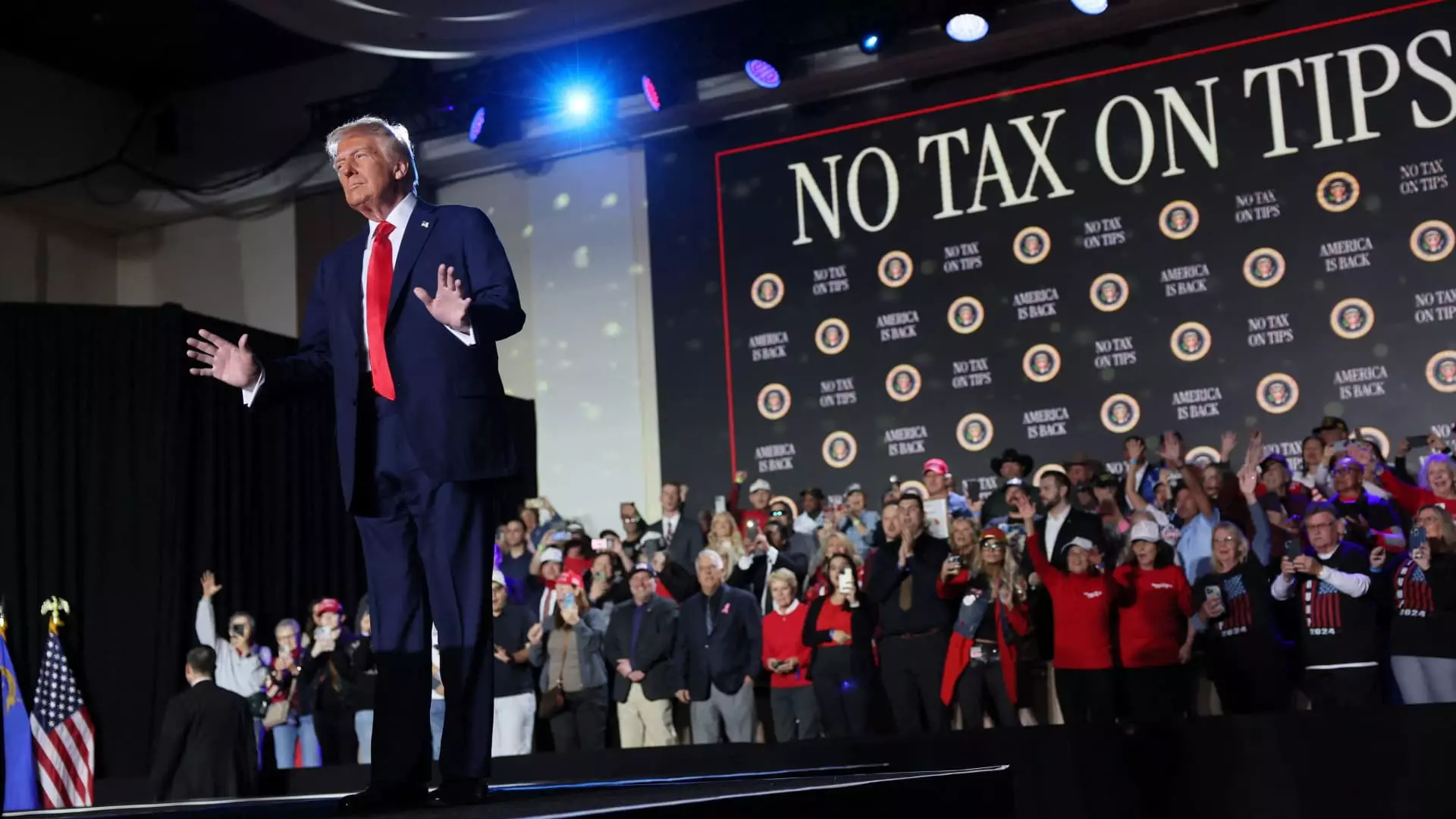In a move that has shocked many, the Senate recently passed the No Tax on Tips Act with surprising unanimity, a development that seemingly resurrects President Donald Trump’s proposal during his 2024 campaign. The act proposes to allow workers who earn tips to deduct up to $25,000 annually from their federal income taxes, supported by a rather generous earnings cap of $160,000 indexed for inflation from 2025 onward. On the surface, this legislation appears to champion the working-class spirit; however, an in-depth examination reveals that it may be nothing more than a band-aid on the deeper wounds facing millions who rely on tips for a living.
A Tipping Point for Inequity?
This legislation’s intention might seem commendable, presenting a tax break designed to provide financial relief for those in tipped occupations—an estimated 4 million workers, or 2.5% of the workforce. What escapes scrutiny, however, is the fact that the bill predominantly benefits a narrow subset of workers, primarily those in higher-paying, full-time positions. Many tipped workers are part-time employees whose earnings may not even surpass the standard deduction threshold, meaning they wouldn’t gain any tangible advantage from such a deduction. The bill, therefore, risks perpetuating a divide between those in the same earning bracket but engaged in different occupations. Why does a waitress earning $35,000, with a portion of her income coming from tips, enjoy preferential treatment over a retail cashier earning the same amount? The disparity flouts the principle of tax equity, an essential tenet in establishing a just society.
Policy by Perception, Not by Viability
Critics of the No Tax on Tips Act, including policy analysts at The Tax Foundation, have raised valid concerns. The bill not only incentivizes a culture of tipping where it may not traditionally exist but also runs the risk of morphing into a misclassification scheme. It becomes increasingly feasible for employers and employees alike to mislabel regular income as tips to exploit tax advantages. The legislation thus addresses perceived inequities but fails to consider the broader implications: a system whereby tipping becomes more commonplace, thus fostering an environment where workers’ base salaries stagnate, leading to further reliance on tips for survival.
It is naïve to consider tipping merely as a benevolent patronage; it is a social behavior deeply entrenched in our economic landscape. Yet, treating it like a standalone income source disregards the interconnectedness of various employment sectors. The rationale underlying this tax exemption fails to accommodate the reality that a cash tip is not inherently different from income made through hourly wages or salaries.
The Bipartisan Quagmire
The bipartisan support for the No Tax on Tips Act may appear laudable, creating an image of political unity around labor issues. However, one can’t help but wonder whether such support stems from genuine concern for struggling workers or a more tactical ploy aimed at garnering votes. While Senator Ted Cruz posits that the bill will “give real relief to hard-working Americans,” the reality may prove otherwise. The enactment of this proposal could create an illusion of substantive change while primarily benefiting those who are already monetarily secure.
Empty promises masquerading as groundbreaking plans can be harmful. They serve to disillusion the very workers they are meant to assist, creating a narrative of change without meaningful impact on their lives. What’s more, pushing this bill forward without adequate consideration of its broader ramifications may erode essential principles regarding tax fairness and equity in the workplace.
A Call for Deliberate Change
While the No Tax on Tips Act is painted as a victory for working Americans, a closer look reveals a tangled web of economic inequities it risks amplifying. Instead of addressing the root issues that plague tipped workers, such as stagnant wages and precarious employment conditions, it offers a simplistic remedy that may not result in the relief it promises. As discussions progress around this legislation, it is imperative that lawmakers deliberate not only on the immediate benefits but also on the long-term implications for income equity and the nature of work in America. Without this comprehensive examination, we may continue to fall into the trap of superficial solutions that only serve to mask the lingering disparities within our labor market.

